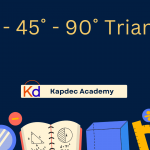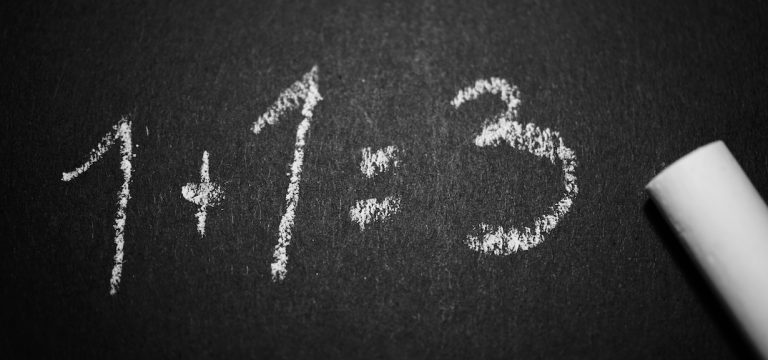The SAT is more than just a test — it’s a pivotal milestone in your journey toward college admissions. After weeks (or even months) of preparation, the final step is showing up on test day fully prepared, calm, and confident. But many students underestimate how crucial it is to know exactly what to bring and what to expect on the day of the exam (1).
This comprehensive guide will walk you through every detail — from required items and ID policies to calculator rules, prohibited devices, and even last-minute tips to ensure everything goes smoothly.

What to Bring on SAT Test Day
Bringing the right items is the first step to a stress-free SAT experience. Forgetting a required document or essential tool could result in being turned away or feeling unprepared during the exam (2). Here’s your must-have checklist:
1. Your Admission Ticket
- Print your SAT admission ticket from your College Board account well before test day.
- Double-check the details — your name, test center, date, and reporting time must be correct.
- Keep it flat and unwrinkled, and store it with your ID so you don’t forget it.
2. Acceptable Photo ID
- A valid, government-issued photo ID (like a passport or driver’s license) or a school-issued photo ID is mandatory.
- The name on your ID must exactly match the name on your admission ticket.
- Expired, photocopied, or digital IDs are not accepted.
3. No. 2 Pencils and Erasers
- Bring at least two No. 2 pencils with good erasers.
- Mechanical pencils are not allowed, so stick to the classic wooden type.
- Avoid pens, markers, or colored pencils — they can invalidate your answer sheet.
4. An Approved Calculator
- A calculator is only allowed for the Math Test – Calculator section.
- Make sure it’s on College Board’s approved calculator list (graphing and scientific calculators are generally allowed, but no phones or tablets).
- Bring extra batteries just in case — you won’t be able to borrow one during the test.
5. Optional Essentials
- A small water bottle and a light snack (to eat during breaks).
- A watch (without smart features) to manage time — though most test rooms have clocks, it’s best not to rely on them.
- Layered clothing (test centers can be too cold or too warm) (3).
SAT ID Requirements: What You Need to Know
Your photo ID is one of the most important items on SAT day. Without a valid ID, you won’t be allowed into the test center — no exceptions.
Here are the key guidelines:
- Must be original (not a copy or photo on your phone).
- Must be valid (not expired).
- Must match the name on your admission ticket exactly.
- Must include a recognizable photo and your full name.
Examples of acceptable IDs:
- Passport
- Driver’s license
- School-issued photo ID
- National ID card
Examples of unacceptable IDs:
- Social media profiles
- Credit/debit cards
- Birth certificates
- Expired documents
What to Expect on SAT Test Day
Knowing the flow of the day can reduce anxiety and help you focus. Here’s how a typical SAT test day unfolds:
1. Arrival and Check-in
- Arrive 30 minutes before the reporting time listed on your ticket (5).
- You’ll present your admission ticket and photo ID at the entrance.
- Security checks may include a visual bag inspection.
2. Seating and Instructions
- Proctors will assign seats and review test instructions.
- You’ll fill out personal information on your answer sheet before starting.
3. Test Structure and Timing
The SAT is about 2 hours and 14 minutes long (without breaks). The sections are:
| Section | Time | Questions |
|---|---|---|
| Reading and Writing | 64 minutes | 54 |
| Math – No Calculator | 25 minutes | 22 |
| Math – Calculator | 55 minutes | 33 |
Short breaks (usually 10 minutes) are provided between sections.
4. During the Test
- You must remain seated and silent unless given permission to speak or move.
- Raise your hand if you need help from the proctor — don’t speak out loud.
5. After the Test
- Once time is called, put your pencil down immediately.
- You’ll be dismissed section by section — no leaving early.
- Double-check you have all your belongings before leaving.
SAT Calculator Policy: What’s Allowed (and What’s Not)
Using a calculator smartly can save time and improve accuracy — but you must know the rules:
Allowed Calculators:
- Most graphing calculators (like TI-84 series)
- Most scientific calculators
- Four-function calculators (though not recommended)
Not Allowed:
- Smartphones or tablets
- Calculators with wireless, QWERTY keyboards, or stylus pens
- Calculators that make noise, print, or require plugs
Pro tip: Familiarize yourself with your calculator before test day. Trying a new model during the test can slow you down and cause errors.
Prohibited Devices and Items
Some items are strictly forbidden inside the test room — bringing them can lead to dismissal or score cancellation (4).
Do NOT bring:
- Smartphones, smartwatches, or wearable tech
- Laptops, tablets, or e-readers
- Cameras or recording devices
- Notes, textbooks, or scratch paper
- Highlighters, pens, or mechanical pencils
It’s safest to leave electronic devices at home. If you must bring your phone, it must be turned off and stored away before entering the testing room.
Confirm Your SAT Contact Details Before Test Day
A simple but often overlooked step is verifying your SAT registration details ahead of time:
- Check your College Board account for the correct test date, time, and location.
- Make sure your email and phone number are up-to-date — this ensures you receive last-minute updates or emergency alerts.
- Print or download directions to the test center so you’re not rushing on test morning.
Final Tips for a Smooth SAT Experience
- Get plenty of rest the night before — aim for 7-8 hours of sleep.
- Eat a balanced breakfast on test day to keep your energy stable.
- Plan your route and leave early to avoid delays.
- Stay calm and focused — remember, the SAT is just one part of your college journey.
Frequently Asked Questions (FAQ’s) About SAT Test Day
What happens if I forget my admission ticket or ID on SAT test day?
If you forget either your admission ticket or an acceptable photo ID, you will not be allowed to take the SAT — no exceptions. Both are mandatory for entry into the test center. Your admission ticket confirms your registration, while your ID verifies your identity. If you realize you’ve forgotten them before leaving home, turn back immediately to get them. If you arrive without them, you’ll need to register for another test date. To avoid this situation, prepare your test-day bag the night before and double-check it in the morning.
What type of photo ID is accepted for the SAT, and does it need to match my admission ticket?
Yes, the name on your photo ID must exactly match the name printed on your admission ticket. Accepted IDs include a passport, driver’s license, national ID card, or a school-issued photo ID. The ID must be original (not a photocopy), valid (not expired), and feature a recognizable photo and your full name. Any mismatches — like a nickname on one and your legal name on the other — could result in denial of entry. If you recently changed your name or found an error, contact College Board at least a week before the test to correct it.
Can I use my phone or smartwatch during the SAT for time management or calculator purposes?
No. All electronic devices — including smartphones, smartwatches, fitness trackers, tablets, and laptops — are strictly prohibited inside the testing room. Using them for any reason, even just to check the time, can lead to dismissal and score cancellation. If you bring a phone, it must be completely powered off and stored away. For time tracking, bring a simple, non-digital watch without smart features, and for math sections, use an approved calculator that’s been tested in advance.
What are the calculator rules for the SAT, and is it possible to complete the test without one?
The SAT allows calculators only during the Math – Calculator section, and bringing one is strongly recommended. Accepted devices include most graphing or scientific calculators (like the TI-84 series), but smart calculators, calculators with QWERTY keyboards, wireless capabilities, or stylus inputs are not permitted. While the questions are technically solvable without a calculator, not using one could slow you down and reduce accuracy on complex calculations. Familiarize yourself with your calculator before test day so you can use it efficiently under timed conditions.
What time should I arrive at the test center, and what happens if I’m late?
It’s best to arrive at least 30 minutes before the reporting time printed on your admission ticket. Check-in procedures, including ID verification and seating assignments, start promptly, and late arrivals may not be admitted. Once the doors close and instructions begin, no students are allowed to enter. Plan your route the night before, account for possible delays, and leave early to avoid unnecessary stress. If you’re running late, contact the test center — but be prepared to reschedule if you miss the check-in window.
Can I bring food or drinks into the testing room?
You cannot eat or drink inside the testing room during the exam. However, you’re allowed to bring a light snack and a bottle of water to consume during designated breaks. Many students prefer energy-boosting snacks like granola bars, fruit, or nuts to keep their focus sharp. Be sure to pack snacks in a small bag or container and clearly label your water bottle. Avoid messy or strong-smelling foods, and remember that breaks are brief — usually 5–10 minutes — so plan accordingly.
What happens during breaks, and can I leave the test center?
During breaks, you are free to stand, stretch, eat a snack, or use the restroom, but you cannot leave the building. Breaks are usually short (about 10 minutes after the Reading and Writing section and 5 minutes after the first math section). Use this time wisely — hydrate, eat something small, and reset your focus. You are still under test rules during breaks, meaning you cannot use your phone, access notes, or discuss test content. Doing so can result in dismissal or score cancellation.
What are some last-minute tips to reduce stress and perform well on SAT test day?
The night before the test, focus on rest and preparation rather than cramming. Pack your bag with all required items (admission ticket, ID, pencils, calculator, snacks, water) and review the test center location. Get 7–8 hours of sleep, eat a balanced breakfast in the morning, and wear comfortable, layered clothing. Arrive early to avoid rushing, and use breathing techniques to stay calm before the test begins. Finally, trust your preparation — pacing yourself, staying positive, and maintaining focus will make a bigger difference than any last-minute studying.
Final Thoughts
The SAT isn’t just a test of knowledge — it’s also a test of preparation and composure. By knowing exactly what to bring, what to expect, and what to avoid, you’ll set yourself up for success before you even answer the first question.
A well-packed bag, a rested mind, and a confident attitude can make all the difference. So prepare smartly, arrive early, and give your best effort — your future self will thank you.
REFERENCES
- How to Master the SAT Math Section: Best Strategies & Tips
- Kapdec Academy | Top Online Tutors for Students | Connecting Educators with Learners
- How to Master SAT Reading & Writing Section: Best Strategy
- Essential Guide: How to Prepare for the SAT and Master it.
- How the SAT Is Structured: Timing, Sections, and Question.







